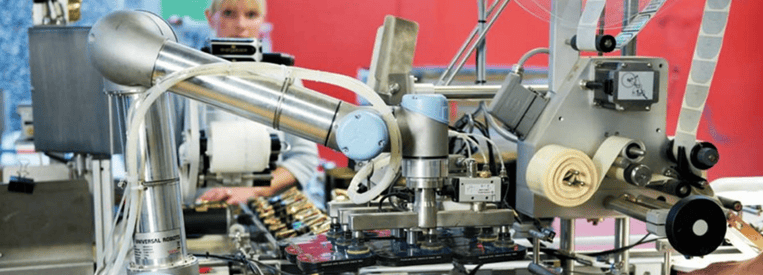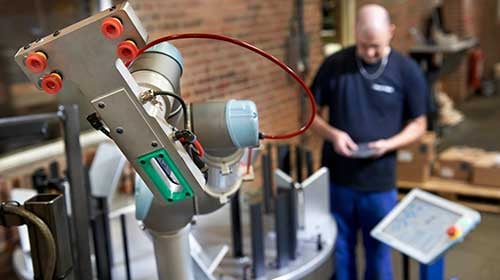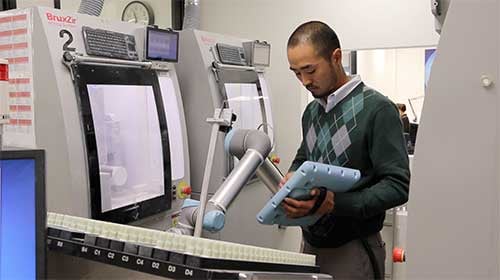-
- bimba
- Universal Robots
- dorner
- cobots
- industrial automation nj/ny
- The Knotts Company
- manufacturing
- Dorner Conveyors,
- The Knotts Co
- UR
- Robots
- PLC
- Unitronics
- automation
- humphrey products
- knotts company
- solutions
- HMI
- automation solutions
- cobot
- conveyors
- robotics
- aluminum extrusion
- aluminum extrusion in nj
- engineered solutions
- Robotiq
- air cylinder
- collaborative robots
- cost effective
- cost savings
- t-slotted extrusion
- bimba solutions
- collaborative robot
- technology
- MiR
- Humphrey
- IAI
- WAGO
- assembly
- bimba pneumatic
- machine guard
- smartflex conveyors
- solution
- 2200 Series
- cylinder
- electric cylinder
- motion control
- packaging
- pharmaceuticals
- sanitary conveyor
- Products
- automated palletizing
- automation control
- conveyor
- core competencies
- grippers
- palletizing
- resource
- robot
- AquaPruf
- Asycube
- Asyril
- Belt Conveyors
- Cage Clamp
- Food
- Machine Guarding
- Mobile Robots
- Norgren
- OptoForce
- Pneumadyne
- Pneumatic Valve
- ROBO Cylinder
- UR5
- actuators
- compressed air
- custom solution
- food safety and sanitation
- mobile industrial robot
- quality assurance
- robotics solutions
- safety
- stainless steel conveyors
- vision
- Belts
- Benefits
- Beverage
- Bimba IntelliSense®
- CT Effects
- PLC+HMI
- Proportion Air
- Proportional valve
- Questions
- Success
- UR10
- Vaccon
- automated inspection
- gripper
- improvement
- industrial vision
- intelligent actuator
- labeling application
- labor shortage
- life science
- medical
- medical industry
- pneumatic motion control
- sales process
- sensor
- thomas
- valve
- 3200 series
- 6-axis robot
- 80/20
- Acro
- Automate
- LMI
- Machine
- OnRobot
- Original Line Cylinder
- Pinch Valve
- Precision Technology
- Predictive Maintenance
- Preventive Maintenance
- Product News
- ROBO Cylinders
- ROI
- Reducing Costs
- automated mobile robot
- autonomous mobile robot
- connectors
- controls
- covid
- custom solutions
- customer service
- e-Series
- electric actuator
- electro-mechanical
- end of arm tools
- energy plant
- ethercat
- external resource
- flexmove technology
- guarding
- inspection
- machine control
- manufacturers
- monitoring
- motion
- new product
- outsource
- outsourcing
- packing
- pneumatic actuator
- pneumatic valves
- precision move
- quick response solution
- regulator
- sales tools
- steel frame
- vacuum
- vacuum technology
- welded steel frame
- 7X Series Conveyor
- AMR
- Advantages
- Application
- Applied Motion Products
- Asycube 530
- Asyfeed Pocket
- Balanced Valves
- CNC program
- Continuity Inspection Tool
- Control Panel
- Controllers
- Crowned Pulley
- F22 Series
- Factory Improved Productivity
- Filtration
- Fire Fighting
- Flexible Feed
- Freeze protection
- Gas
- High Pressure Regulator
- IP65
- Inspekto
- IntelliPress
- Intellisense
- International Manufacturing Technology Show 2016
- LARGO A5
- Legos
- MIRAI
- Machine Controllers
- Machine Vision
- Micropsi
- NJ
- NY
- New
- New Scale Robotics
- OEE
- Oil
- Optimization
- PACK EXPO
- PC10
- Parison Blow Molding
- Pick-it
- ProControl Series
- ROEQ
- Rain Test
- Resin Block
- Rio Olympics
- SCHUNK
- Sanitation
- Sensors
- Smart Manufacturing
- Spot Welding
- TRD
- Temperature Controller
- Training
- Trio Manufacturing Technology
- Twist Clamp
- UR3
- UniStream
- Universal
- V-guide
- Valve Assemble
- Vane-Buster
- Versagrip
- Versagrip solenoid pinch valves
- Victory Actuator
- Vision430
- XTR Series
- Yamaha
- balanced solenoid valve series
- bimba electric
- bottle filling
- brewery
- brushless motor
- buna
- center point
- chicane
- cloud
- cobot compliance
- collaborative operation
- compact series
- composite cylinder
- conference
- cost
- date code
- demonstration
- desiccant drier
Get the latest in your inbox.
This post is brought to you by Universal Robots.
By Roberta Nelson Shea and Seungmin Baek Collaborative robots have become the buzzword in industrial automation. At Universal Robots, we define ‘collaborative‘ by ease-of-use, ease of integration, and affordability and safe. In this blog we focus on how the safety aspect is defined by the current safety standard.
Collaborative robots have become the buzzword in industrial automation. At Universal Robots, we define ‘collaborative‘ by ease-of-use, ease of integration, and affordability and safe. In this blog we focus on how the safety aspect is defined by the current safety standard.
In February, Universal Robots welcomed the new ISO/TS 15066 guidelines on safety in collaborative robots systems that lists four types of collaborative operation:
a) Safety-rated monitored stop
b) Hand guiding
c) Speed and separation monitoring
d) Power and force limiting
When it comes to the safety-rated monitored stop, the robot system stops before the human operator can access or be exposed to any hazard in the collaborative workspace. Only when there is no human operator, the robot can move as a non-collaborative robot. In other words, either the robot system or the human operator moves, not both at the same time. This method cannot utilize the advantages of collaborative operation and it requires safeguarding of a traditional industrial robot. The benefit that this offers is the ease and speed to resume automatic operation.
With respect to the hand guiding operation, the human operator uses a hand-operated device and the robot system moves based on motion commands of the operator. It is a kind of manually controlled operation in that the operator is in direct control of the robot system’s operation. This is considered automatic operation, not manual operation.

In reality, only option c) and d) are used for beneficial collaborative applications in industry:
Currently, most collaborative robots including Universal Robots are inherently designed to limit power and force. If the robot detects a certain level of power or force, the robot stops the robot system to protect the human operator. Due to the safety-functions for motion, speed, force, and power monitoring, the human and robot system can move at the same time in the same workspace. As long as the risk assessment is conducted properly, traditional guards and protective devices are not needed.
The power and force limiting method assumes that the human can contact the moving robot system. Hence, we should consider the impact to human body during the risk assessment process. To prevent pain or injury, the application restricts payload and speed. As a result, the robot speed will likely be too low to be useful for high risk applications.
In order to use the speed and separation monitoring method, external safety devices such as a safety scanner have been used to lower speed as a person approaches the collaborative workspace.

These days, the research on additional technologies for sensing humans is being conducted. For example, a capacitive sensor could be used to measure the distance between the human and robot system. These new technologies have yet to be commercialized for safety functions. Regardless of technology, safety sensing needs to meet the required functional safety and the application be verified and validated.
If the sensing technology to detect humans is successfully developed and certified as a safety-rated product, it is possible that the safety device would be integrated with the robot as a common feature.
In the future, the speed and separation monitoring operation can be deployed in the real industry upon the development of advanced safety sensors. The robot could slow the system’s speed if the human operator comes closer to the robot. If the human gets too close to the robot system, the protective stop would be triggered. The robot could move faster and the payload could be heavier because the robot system will not contact the human operator.
For more efficient operation, dynamic safety system configurator can be used. The safety setting changes corresponding to the distance between the human and robot. Furthermore, the robot can change the path of motion planning based on human movement. Then, the robot system does not have to stop even if the human operator enters the robot moving area.
Interested in an Universal Robot?
Interested in Learning More?
Please fill out our contact form, and a member of the Knotts Team will get in touch to help you.
%202.png?width=323&height=215&name=PH_VA_VR_Series_Technical_Support%20(1)%202.png)



